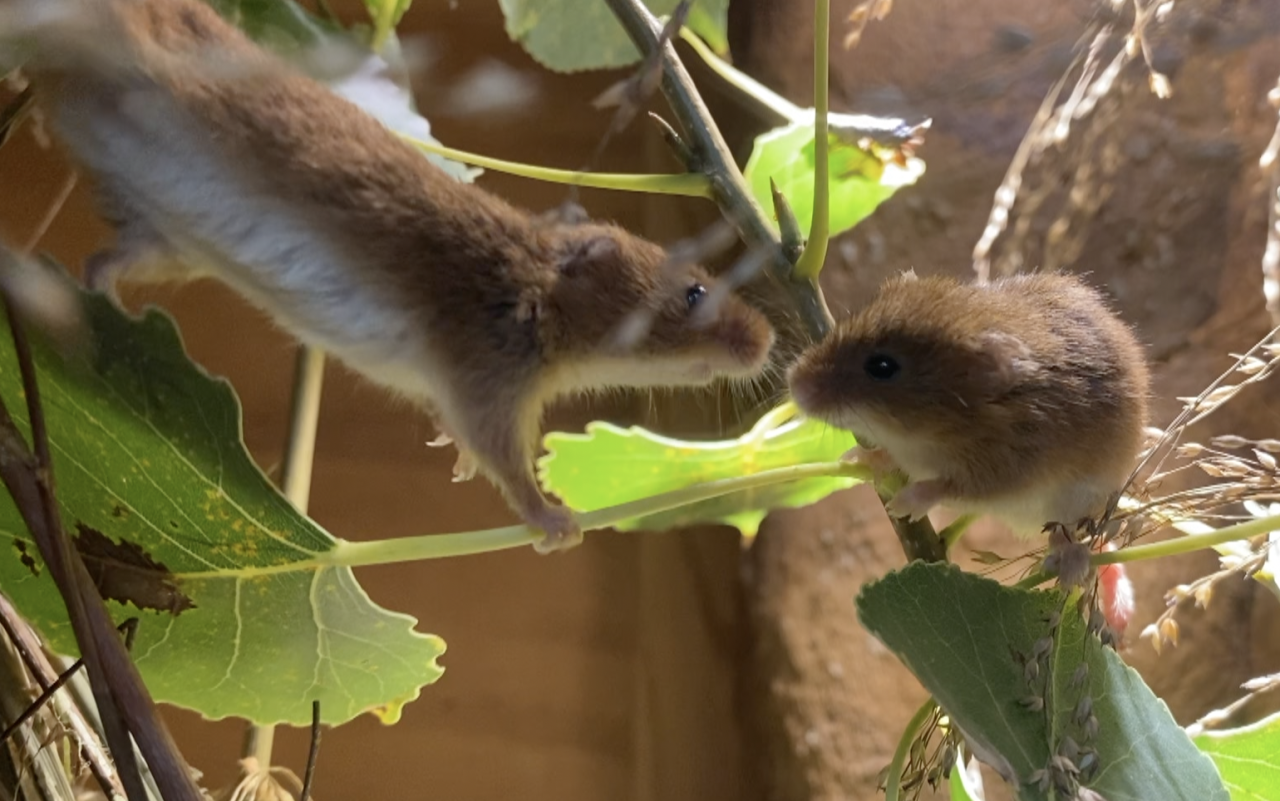OMAHA, Neb. (KMTV) — It may be Halloween but there's nothing spooky about this visit in Zach at the Zoo — where we are introduced to the Eurasian Harvest Mouse.
- It's our first trip on Zach at the Zoo to the Wild Kingdom Pavilion.
- “I love them. They are one of my tops."
- WATCH the 50-75 Eurasian harvest mice run around their exhibit.
BROADCAST TRANSCRIPT:
They aren't the first animal to grab your eye at the zoo, but they're easy to sit back and watch once you see them.
“So were talking about the Eurasian harvest mice,” Lead Keeper of the Wild Kingdom Pavilion Annette Schmitt said.

“I love them. They are one of my tops."
“How many we got in here?" I asked. "They’re running all around!”

“So we have around 50 to 75 in there.” “Wow.”
These little guys are always on the move.
“A lot of animals are nocturnal or diurnal, but these guys are active all the time. They kind of have a three hour rhythm," Schmitt explained. "About every half hour, they will go and feed and forage for food, then they will rest for the rest of the time — but then the three hours will start over again.”
Their bodies are only about 2 to 3 inches long.
“And they only weigh about four to eleven grams,” Schmitt said.

“A nickel is about five grams. So the weigh about the size of a nickel.”
Their tails are about the same length as their bodies.
“It is a prehensile tail. Which means they can climb up in those grasses and can use that tail to grab on to things.”

Schmitt continued, “And they have really long, broad feet — their back feet are. As they’re climbing up in the grasses, they will use those broad feet and that prehensile tail to grab on to things to leave their front feet open so they can forage for food.”
“They enjoy the fruits and vegetables and seeds — so they are considered omnivores, because they will also go after those insects,” Schmitt said.

Taking care of pests near crops is just one of the positives of having them around.
“They’re considered pollinators. They will collect pollen on their fur from one flower and take it to another.”
These mice are capable of having multiple litters a year.
“The females, when they’re getting ready to have young, will make a nest that’s like a ball — it’s kind of the shape of a tennis ball. They will close it all in, have the pups, and they will be in there for about a week.”

Schmitt continued, “At about 17 to 19 days they become independent and will leave the nest, and they will make a new nest for very litter they have.”
Independent but still very social!
You can catch them in action inside the Wild Kingdom Pavilion.




